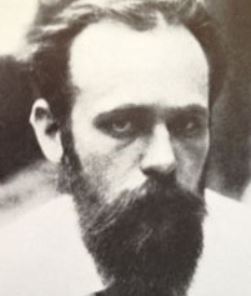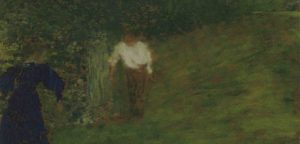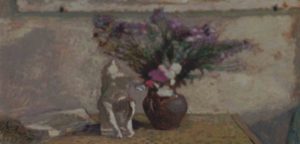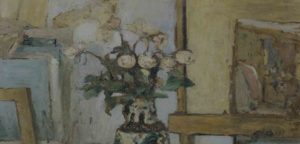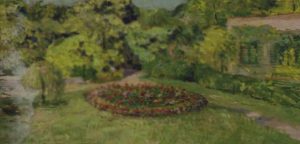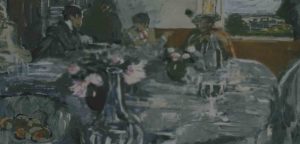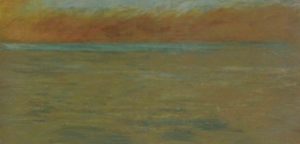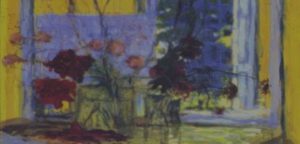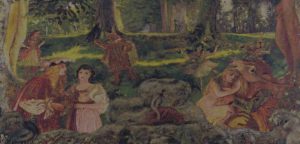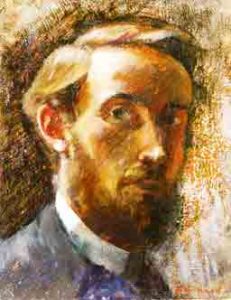Jean Edouard Vuillard was born on the 11th of November in 1868 in Cuiseaux, France.
1868 - 1940
Jean Edouard Vuillard
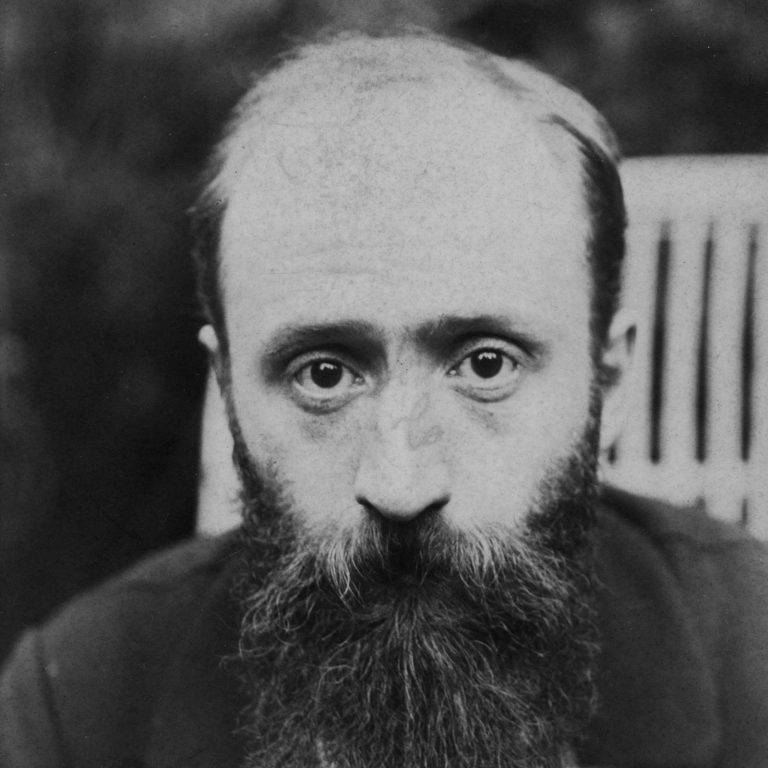
description
A French artist, graphic artist and designer.
Representative of Symbolism and Art Nouveau, one of the founders of the group of artists “Nabis” (French “Nabis”, from Hebrew “The Prophets”).
The works of Vuillard are referred to the genre of “intimism” for the striving for the poetization of everyday life. Paintings of Vuillard, covering not so many themes, differs in harmony and original tonal decision, which makes it quite recognizable even among other “nabists”. The artist is famous not only for his paintings, but also for interesting monumental compositions. His frescoes can be seen in the foyer of the theater of the Champs Elysees, in the Palais de Chaillot and the Palace of Nations in Geneva.
Key Ideas:
– The typical features of paintings and other works of Vuillard are chamber scenes. Herewith, the images seem to merge with the background, become inseparable from it. Figures and individual objects are deliberately blurred, and this enhances their charm, imparting some secrecy to them. The artist uses color consonances masterfully, originally selecting their gamma.
– Works of the Nabis artist attract with their freshness and immediacy of perception, the subtlety of the emotional approach to everyday life, exquisite composition and the expressiveness of silhouettes. The artist’s paints that mostly have close to each other transitional shades create a special rhythm and a subtle feeling of the vibration emanating from the canvas.
– Having started his work in a manner close to the Dutch artists of the XVII century and Chardin, Vuillard quickly moved to Impressionism. In the interiors painted by the artist, human figures, mostly female, began to appear.
– The painter’s art became increasingly monumental with time, and his paintings became large in size. Over time, Vuillard began to create panels and wall paintings. In addition to home scenes, Vuillard liked to depict blossoming gardens and city parks in his canvases. Also, the artist was engaged in portrait painting, mainly to earn a living.
– The mature creativity of the artist refers to Symbolism. The most typical symbolic works of Vuillard were created in the manner of “intimism”. They depict figures in the interiors that make up a rhythmic unity within the background.
– The artist’s paintings are characterized by the form simplicity, two-dimensionality, a craving for warm, slightly muffled tones and shades. Sometimes, in the paintings, there are areas of a local dark color, which confirms their decorativeness.
– The distinguishing feature of the master’s paintings is emphasized ornamentation. The artist carefully paints the pattern on the wallpaper, the upholstery of furniture, and the dresses of heroines. Despite the abundance of small details, the canvases of Vuillard do not create an impression of congestion, but constitute a single harmonious ensemble.
1868
1884
1887
1889
1890
1892 - 1896
1901 - 1903
1910 - 1920
1937
1940
The birth of the artist
He started his studies at the lycee Condorcet
He started his studies at the lycee Condorcet. However, soon decided to become an artist, quitted the lycee and began to study at the studio of painter D. Meilard.
He was admitted to the School of Fine Arts in Paris
After several unsuccessful attempts, he was admitted to the School of Fine Arts in Paris.
Joined the creative group "Nabis"
Joined the creative group “Nabis” (from the Hebrew “Prophets”), founded by Paul Sérusier. The association included such artists as Maurice Denis, Pierre Bonnard, Ker-Xavier Russell and others.
Got acquainted with brothers Natanson
Got acquainted with brothers Natanson, the owners of the art issue “La Revue Blanche”. His works, along with the works of Pierre Bonnard, Henri de Toulouse-Lautrec and Felix Vallotton, were regularly published in the magazine.
Decorated the interiors of residential apartments
Decorated the interiors of residential apartments (created “apartment frescos”) and soon became a very popular artist. He collaborated with Lugne-Poe at the Symbolist Theater of Creativity, creating scenery for the theater and taking part in the creation of mise-en-scenes.
The artist's works were first exhibited at the Salon of Independent
The artist’s works were first exhibited at the Salon of Independent, and then he took part in the Autumn Salon.
He began to cooperate with Sergei Diaghilev
He began to closely cooperate with the enterprise and with its head Sergei Diaghilev.
Completed palace paintings in the Palais de Chaillot
Completed palace paintings in the Palais de Chaillot.
The death
The artist passed away on the 21st of June in 1940 in La Baule, France.

